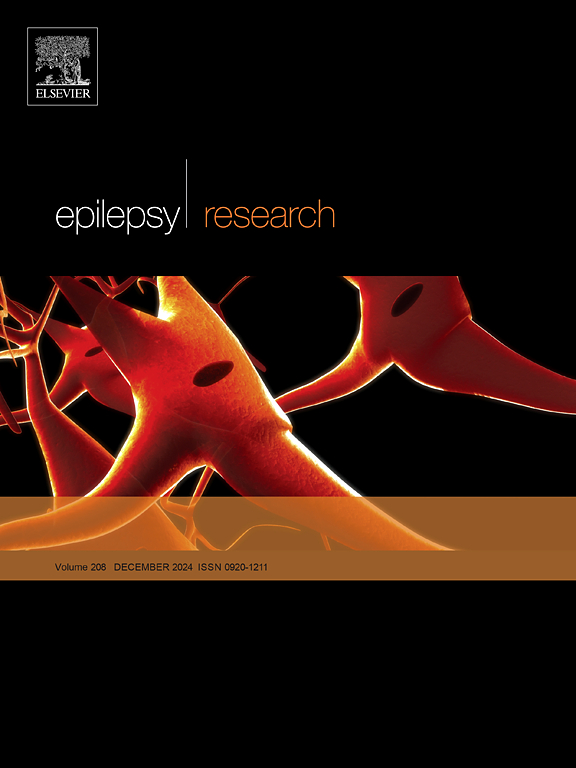基于脑电图分析的人工智能技术在癫痫疾病诊断中的系统综述:临床视角
IF 2
4区 医学
Q3 CLINICAL NEUROLOGY
引用次数: 0
摘要
近年来,人工智能(AI)特别强调注意机制,而不是传统的深度学习(DL)或机器学习(ML),已经在不同的医疗领域证明了显著的适用性。本文将重点从一般的脑映射技术转移到专门研究人工智能在癫痫诊断领域的影响,专注于脑电图(EEG)数据。虽然早期的研究主要集中在使用脑电图记录自动识别和预测癫痫发作,但一个新兴的研究机构深入研究了人工智能技术增强脑电图数据分析的潜力。这篇系统的综述提供了一个全面的概述,从对人工神经网络(ANNs)和注意力机制的简明理论阐述开始。后续章节将探讨人工智能在癫痫脑电图分析中的应用,包括癫痫的诊断、侧化、病灶自动检测、术前评估、术后预后预测等方面。讨论不仅强调了人工智能在改进临床实践方面的前景,而且强调了它在将癫痫视为一种网络障碍的情况下,为癫痫量身定制个性化治疗方面的潜力。文章最后指出了人工智能在癫痫研究中的局限性和挑战,并提出了人工智能在癫痫研究中的未来应用方向。在承认这种方法的变革潜力的同时,它强调需要更多的多中心协作来收集高质量的数据,并确保开发的代码和工具的开放可访问性。此外,人工智能模型在计算机辅助诊断(CAD)中的应用在提高癫痫和癫痫发作诊断的准确性和效率方面具有重要的前景。这种先进技术的整合有助于开发用于临床决策的强大工具,并强调了人工智能驱动的神经保健解决方案的潜力。本文章由计算机程序翻译,如有差异,请以英文原文为准。
A systematic review of artificial intelligence techniques based on electroencephalography analysis in the diagnosis of epilepsy disorders: A clinical perspective
In recent years, Artificial Intelligence (AI), with a specific emphasis on attention mechanisms instead of conventional Deep Learning (DL) or Machine Learning (ML), has demonstrated significant applicability across diverse medical domains. This paper redirects its focus from general brain mapping techniques to specifically investigate the impact of AI in the field of epilepsy diagnosis, concentrating exclusively on Electroencephalography (EEG) data. While earlier studies have predominantly centered on the automatic identification and prediction of seizures using EEG records, an emerging body of research delves into the potential of AI techniques to enhance the analysis of EEG data. This systematic review offers a comprehensive overview, commencing with a concise theoretical exposition on Artificial Neural Networks (ANNs) and attention mechanisms. Subsequent sections explore the applications of AI in EEG analysis for epilepsy, covering aspects such as diagnosis, lateralization, automated lesion detection, presurgical evaluation, and the prediction of postsurgical outcomes. The discussion not only highlights the promising aspects of AI in refining clinical practices but also underscores its potential in tailoring individualized treatments for epilepsy, considering it as a network disorder. The paper concludes by addressing limitations, challenges, and proposing future directions for the application of AI in epilepsy research. While acknowledging the transformative potential of this approach, it emphasizes the necessity for greater multicenter collaboration to amass high-quality data and ensure the open accessibility of developed codes and tools. Moreover, the application of AI models in Computer-Aided Diagnosis (CAD) has exhibited significant promise in enhancing the accuracy and efficiency of epilepsy and seizure diagnosis. This integration of advanced technologies contributes to the development of robust tools for clinical decision-making and underscores the potential for AI-driven solutions in neurological healthcare.
求助全文
通过发布文献求助,成功后即可免费获取论文全文。
去求助
来源期刊

Epilepsy Research
医学-临床神经学
CiteScore
0.10
自引率
4.50%
发文量
143
审稿时长
62 days
期刊介绍:
Epilepsy Research provides for publication of high quality articles in both basic and clinical epilepsy research, with a special emphasis on translational research that ultimately relates to epilepsy as a human condition. The journal is intended to provide a forum for reporting the best and most rigorous epilepsy research from all disciplines ranging from biophysics and molecular biology to epidemiological and psychosocial research. As such the journal will publish original papers relevant to epilepsy from any scientific discipline and also studies of a multidisciplinary nature. Clinical and experimental research papers adopting fresh conceptual approaches to the study of epilepsy and its treatment are encouraged. The overriding criteria for publication are novelty, significant clinical or experimental relevance, and interest to a multidisciplinary audience in the broad arena of epilepsy. Review articles focused on any topic of epilepsy research will also be considered, but only if they present an exceptionally clear synthesis of current knowledge and future directions of a research area, based on a critical assessment of the available data or on hypotheses that are likely to stimulate more critical thinking and further advances in an area of epilepsy research.
 求助内容:
求助内容: 应助结果提醒方式:
应助结果提醒方式:


